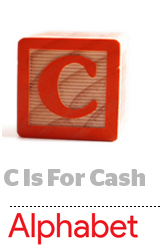 Despite Alphabet bringing in total revenues of $36.3 billion for Q1 – up 17% from last year – investors are skittish.
Despite Alphabet bringing in total revenues of $36.3 billion for Q1 – up 17% from last year – investors are skittish.
For one, Alphabet’s revenue would have been higher if not for a $1.7 billion fine levied by the European Union last month on Google’s AdSense business.
But analysts were more concerned about the slowdown in Google’s growth rate, particularly potential drop-offs in North America and Europe. Because a 17% growth rate might sound healthy, but it’s down significantly from Q1 2018 when it was 28%.
In the same vein, Google ad revenue increased 15% year-over-year, which is down from 24% a year ago.
Partially, this deceleration is due to the Law of Large Numbers taking hold. For some perspective, Google’s raw growth surpassed the ad growth of Amazon and Facebook combined. In other words, Google is actually pulling further ahead, even as its growth rate slows compared to those ad platforms.
CFO Ruth Porat also blamed the revenue growth slowdown this quarter at least partly on “the timing of product changes in the ads business.”
But Porat and CEO Sundar Pichai declined to elaborate on which media channels or regions were most affected by the product changes. Pichai noted that changes often come about after testing with users and advertisers, and decisions about ad product updates aren’t tailored to fit quarterly earnings schedules.
There are, however, some real headwinds facing parts of Google’s business – and that’s not counting the more than $9 billion in fines the company has paid the EU since 2017.
Desktop was a “modest contributor” to growth and remains influential for key verticals like travel planning and shopper search, Porat said. But desktop ad growth has tailed off, and, unlike with mobile ads or YouTube and other video campaigns, there’s no clear road to stronger banner and desktop search performance.
Traffic acquisitions costs (TAC), the amount Google pays to traffic sources in order to serve an ad, grew 22% from $6.3 billion in Q1 2018 to $6.9 billion so far this year.
That higher TAC is a potential runaway expense issue for some investors, because high-growth areas such as mobile, voice search or ecommerce marketing, come with higher TAC rates. Google pays top dollar to other tech giants, including Apple and Samsung, to be the default search provider on smartphones and browsers – and those mega payments fall under TAC.
On top of TAC, there are also the additional outlays Google is making for original content and marketing to promote its streaming services, Porat said. Even compared to Google’s estimates from three months ago, the streaming subscription market is more competitive and expensive.
On the accelerated pace of investment, Porat pretty much had this to say: It is what it is.
“What we’re really looking at is what’s required to support long-term growth,” she said.










